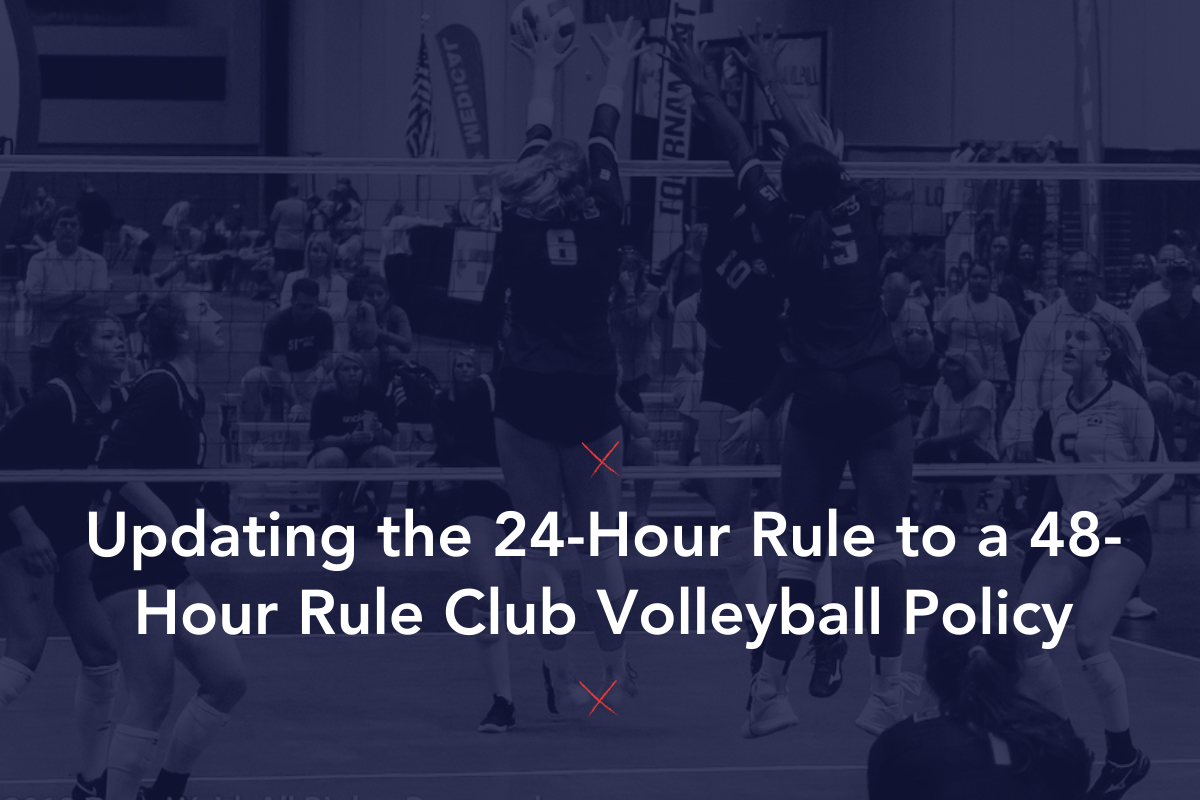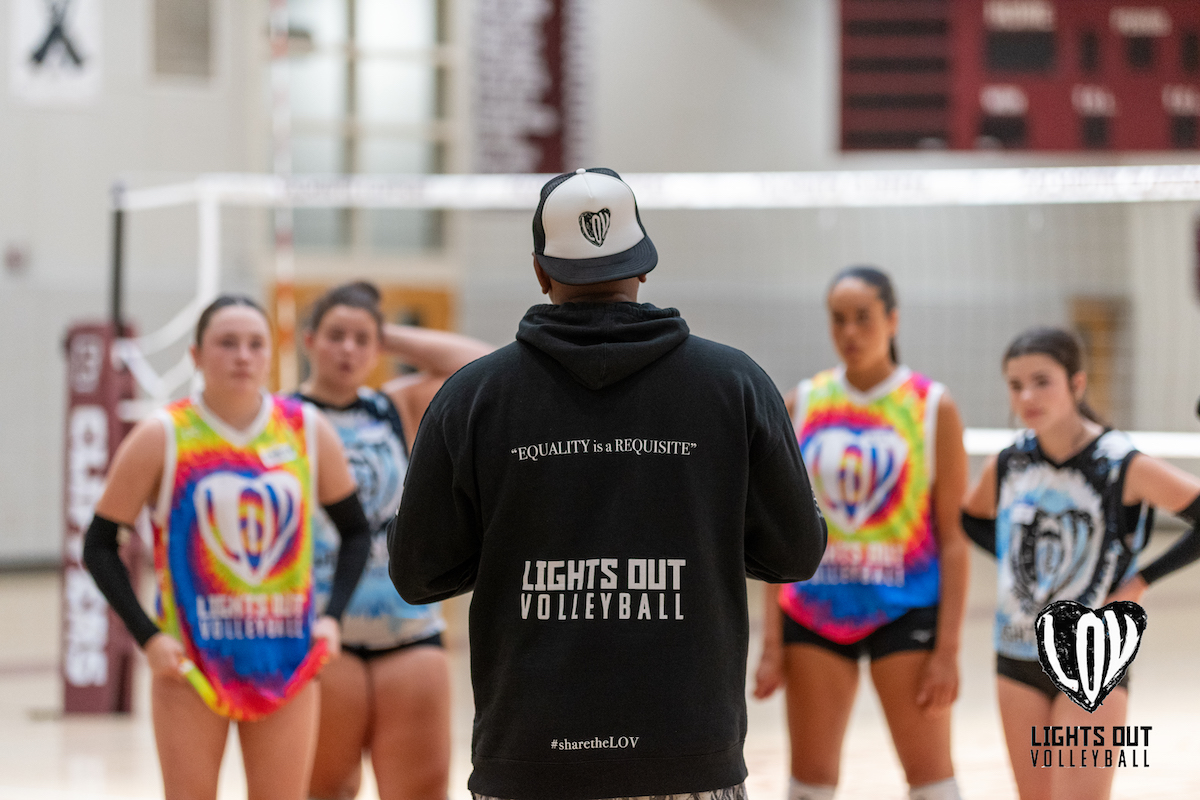Many clubs are recognizing the value of having a beach program because of the rapid growth in the sport’s popularity and participation. Rather than lose your athletes to a nearby beach club for a few months, consider starting a beach program to retain your customers your round. In order to develop your beach program and retain your athletes, it’s essential to have options for them to compete.
If you are considering hosting a beach tournament, here are 9 tips to help you run a successful event:
1) Run on time
Parents and athletes are very busy, and value their time, so build a reputation of starting and ending on time. Technical timeouts, players shagging their own ball, not having enough balls, time outs, warm-up; all of these things can add up to hours in a day. Put limits on the downtime between games and matches. If you see an empty court, make sure it is filled as soon as possible. This is especially important if you are renting courts hourly, or running AM/PM waves. Being efficient and running on time makes customers want to come back because they can plan the rest of their day around your event.
2) Make it an experience
Deck the venue out, provide coffee, water, shade, fruit, lunch, music. Make sure the nets are perfect height and tightness, rake the courts if you have time. Think of the extra items that bring value to the athlete and spectators’ tournament experience. You want parents and players to leave the event saying: “wow, that tournament director went the extra mile.”
3) Submit results within 24 hours
Parents and athletes are constantly tracking their points, paying attention to seeding, and making plans for a future event. Seeding of events matters, players know it, get your results in!
4) Provide clear expectations for reffing/rules at the beginning of the day
During the morning meeting and before the tournament, make sure everyone is on the same page. Go over the basics if you must; no passing with open hands, how loose you should or shouldn’t be with hand setting etc. During the announcement period, if you want to hold different ages to different standards, talk to each division separately. We tend to encourage all hand setting for our 12U and 14U divisions, and then get stricter with 16U and up.
5) Post the pools the night before and share with the attendees
There is really convenient software available that can solve a lot of issues. One option is Volleyball Life that can automatically seed, build pools, bring players into brackets, keep track of time, assign refs, keep score, post results, digital waiver system, online check-in, and send emails to each division. It really handles all the headaches for you. I have personally run a 40 team tournament with my cell phone.
6) Have an efficient format
4 team pools and bracket play can be done in 6 hours if you do match play with FIVB style pools Single elimination bracket one to 21.
- Try to encourage some match play. If the goal is to prepare the players for the next level, pro or college they need to learn all the nuances that go into playing a match. The Club vs Club model is growing rapidly and college coaches love when their freshmen enter college with the experience of competing in this format.
- Try to take 6, 12, or 24 teams into brackets. It provides a bye for the top teams, which can be assigned to ref, otherwise you have to keep a team that didn’t make it out of pool, ref yourself or run a wave that can slow down the bracket.
- FIVB pool Match play (best 2 of 3) example:
- 1v4 @ 9am
- 2v3 @ 10am
- Winner vs Winner @ 11am
- Loser vs Loser @ 12pm
- Bracket will be dependent on size but assume 30min for 1 game to 21
7) Think of all the details
Parking, closest food options, check-in time, weather (wind in particular- when setting up tents/umbrellas), bathroom accessibility are some essential details to plan in advance. Is there enough toilet paper? Where should athletes set up their video? What happens if teams don’t show up or cancel last minute? What happens if a team is late? What happens if there is an injury? Do you have a first aid kit and access to ice? Make a list and have these details worked out at least a few weeks before the event so you stay organized.
8) Know your budget
Each court with 4 teams scheduled to compete will bring in $240-$400 per day pending the price of the tournament. Allocate some of your earnings to great prizes. Courts from non-beach facilities cost anywhere from $10-$50/hour. If you are running multiple tournaments or multiple waves in a day, negotiate with the facility provider. Ask for a cap like $25/hr until you reach 5 hours in a day. Most of the time the venue wants your business. Or even better, build your own courts so you can control the overhead and expenses. tournaments can be lucrative when done right.
9) Keep the parents in line
All it takes is one parent to negatively impact an event experience. Parents are not allowed to coach their daughter during play. Make sure this is communicated in advance and you have it officially stated in your Tournament Rule Book. If someone crosses the line, ask them politely not to do it again. If they do it again make sure you have the next course of action stated in your Rule Book, ie: removing them from the event, disqualification from future events, etc. One of the benefits of beach volleyball is the accountability that is put on the athletes during tournament play.
As the beach volleyball landscape continues to evolve, the competitive offerings will help drive the sports growth and popularity. If you are running a quality beach event and working together with nearby clubs you will have an easier time sustaining and growing your beach program and beach tournaments.
Additional resources to run a beach volleyball tournament
About the Author
Kevin McColloch is the Owner of Moxie Beach, a JVA member club located in Northern California. He is also the COO of Volleyball Life, an event scheduling and results platform for beach volleyball. Kevin is a former AVP Professional Athlete from 2002-2016 and the former UC Davis Assistant Beach Volleyball Coach from 2018-2021.











